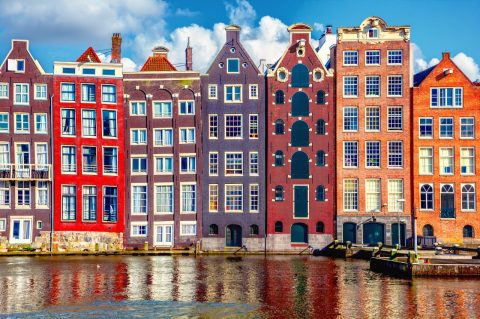Just a Short Bike Ride from the City, a Taste of Amsterdam's Bucolic Past Awaits
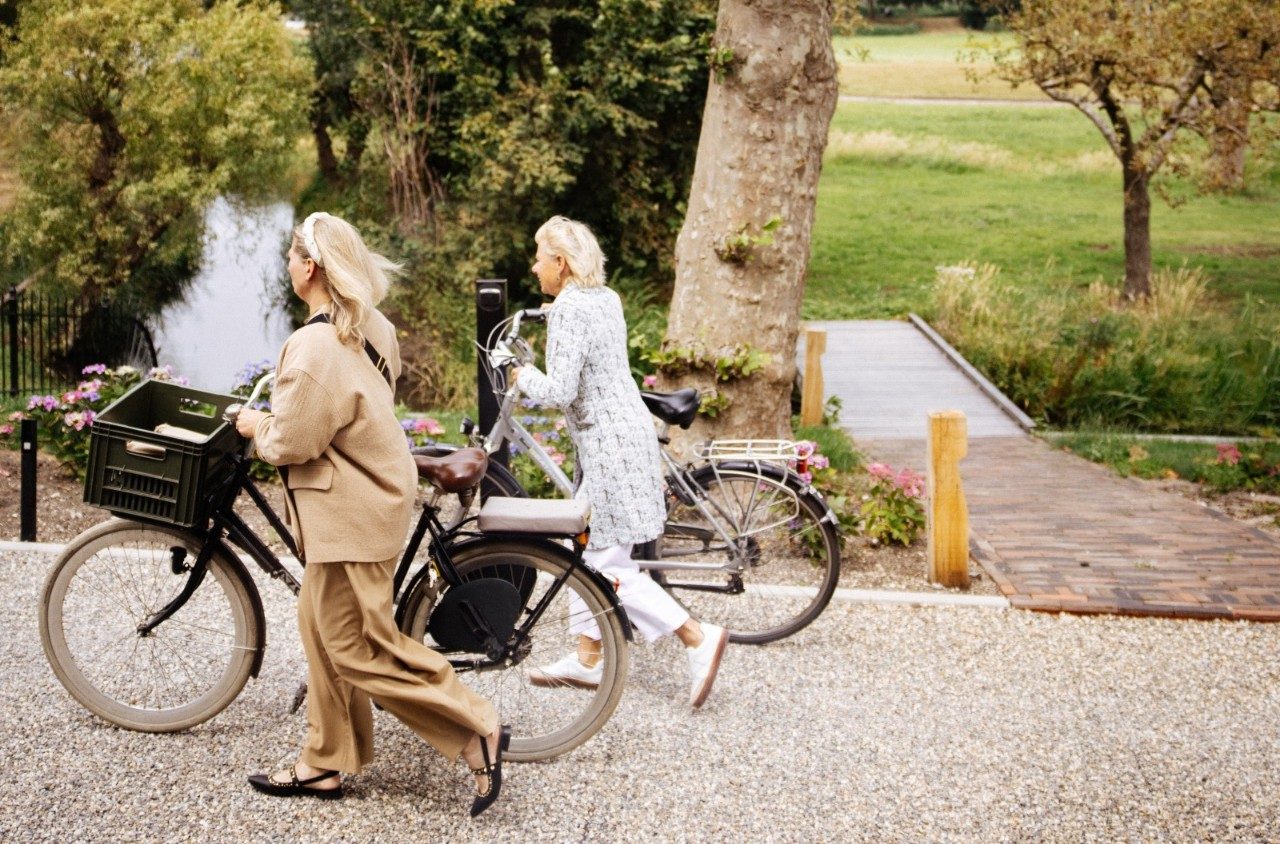
Drive along the A2 highway from Amsterdam in springtime and you might see dairy cows ambling from their winter sheds and bouncing across the Duivendrechtse Polder, a peat meadow that’s been farmed since the 12th century. “They become super-happy and start to sort of jump and cheer,” says gardener Gyalpo Batstra. “You can feel the ground shake.”
In the old days “there were lots of growers around here,” he says. But as the city expanded, farming declined and the polder was destined for property development. Yet hoteliers Koos Bekker and Karen Roos had other ideas. The couple behind Babylonstoren in South Africa’s Western Cape and The Newt in Somerset, south-west England, have a soft spot for the polder: decades ago they lived here and still own a house nearby. More recently they acquired the 24-hectare Over-Amstel Boerderij, one of only five remaining working farms on the polder, and set about resurrecting its waterlogged roots.
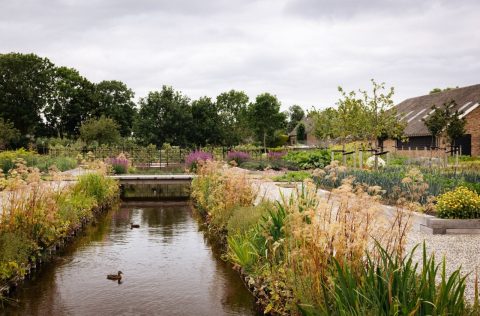
The long house, built in 1894, is now a revitalised manor overlooking the Amstel River. Protruding like a bustle behind it is a farm-to-fork restaurant, its low walls harbouring clues to its past life as a barn: a brick floor, hayloft and cattle troughs. Adjoining the polder is the Patrice Taravella-designed garden, where Batstra’s kitchen crops are taking root. “The berries like the sour soil here,” he says, pointing out cranberries, honeyberries, sweet black currants and tart white currants, which offer an inventive solution to the Netherlands’ dearth of lemon trees. “We can use [the white currants] as sour notes in cocktails.”
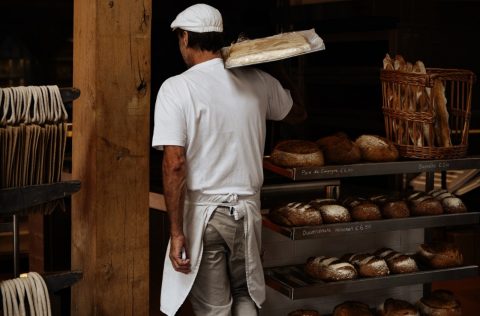
The farm plot is also sprouting heirloom vegetables such as witlof and kudelstaarts koninkje, a peat-friendly potato from nearby Aalsmeer. After the farm opened to the public late last year, there was a surfeit of zucchinis and “enough rosemary to supply the whole of Italy”, says chef Herb van Drongelen. Formerly of Herbs Garden Restaurant at the Four Elements Hotel Amsterdam, van Drongelen is well-known for producing menus embedded in locally sourced ingredients. “Eighty per cent of the dishes should have components from the premises,” he says. “That means bread, cheese or vegetables from the farm itself.”
Hungry Amsterdamers are here for it. Parking is limited so they’re piling off a riverboat at Over-Amstel’s daffodil-fringed dock on the Amstel River the weekend I visit. The complimentary transfers depart from the village of Ouderkerk aan de Amstel, 20 minutes upriver, on days the farm is open (Friday to Sunday for breakfast and lunch, as well as evenings for themed dinners). Others walk or cycle; it’s a flat, 25-minute ride from The Diamond, a chic boutique hotel at Leidseplein near central Amsterdam where bike hire is available to cover the five-kilometre trip.
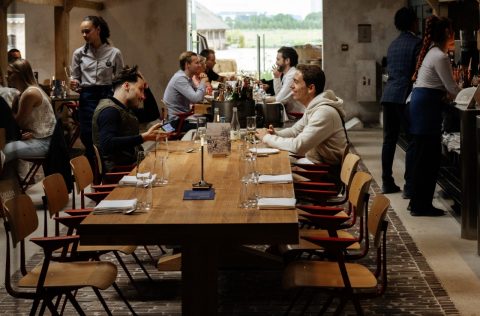
“You cannot get more ‘outside’ and yet be so close to the beautiful city of Amsterdam,” says van Drongelen. The breakfasters are soon knocking back shots of pear juice from De Appelaere’s Zeeland orchards, feasting on organic oats from De Halm, curd from the onsite creamery and croissants pulled from the oven this morning by French baker Olivier Silliau. I head to the creamery and roll up my sleeves for a cheesemaking workshop with organic goat farmer Dewi van Lieshout. Before me is a basin of milk from those bouncy cows, gathered from neighbouring farms in milk carts drawn by an electric tractor. Curds cut, washed and cooked, we down tools. “They say if a cheesemaker doesn’t have a tea-break for at least 20 minutes, the cheese won’t be good,” says van Lieshout.
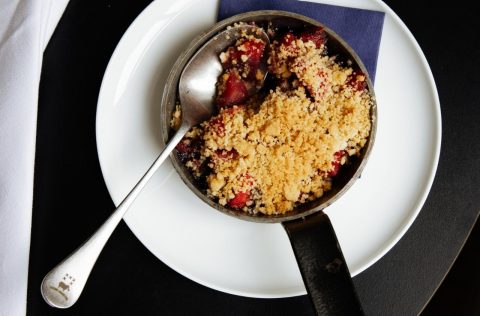
“Tea” is a wine-and-cheese soirée in which we sample some of the products sold in the farm shop: a sparkling, non-alcoholic veld tea from Firma Bruis – “the best winemakers in the Netherlands,” says restaurant manager Emanuel Schob – and wedges of gouda made in honour of Amsterdam’s 750th birthday. We amateur cheesemakers spill out onto the garden terrace for lunch: pearly white asparagus from southern Holland; Silliau’s golden brioche filled with wild venison sausage; and steak tartare from a few farms down, garnished with radish from Batstra’s garden. Traffic hums like a beehive on the far side of the polder. In the distance is Amsterdam; if I reached out, I could touch it.
